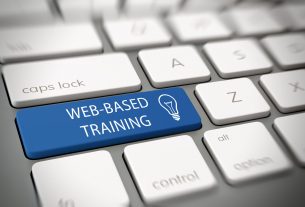Call it a quirk of human nature. The easier something is, the faster we want it to happen.
Online shopping is no exception.
Expectations for quick online transactions are so high that when one large retailer’s site speed slowed by half second, sales fell by 11%.
To help your business not be a victim of a sluggish site, we offer these 5 speed optimizer tips for your ecommerce page.
1. Cache Your Site
Caching means that the first time a user looks at your site, their browser stores the files associated with each page viewed.
The next time they visit a page, the browser already has most or all the files it needs. Retrieving image, style, and other static files from your server is necessary. And that saves page loading time.
If you have a WordPress site, there are several good free plugins that do the job. SharePoint offers similar widgets.
2. Optimize Images
Images and video are important to the user experience and SEO. As a result, it’s critical to prepare each image to make it a speed optimizer, not a drag on page loading.
Keep the dimensions of the image when viewed on the page close to the dimensions viewed alone. The closer the ratio, the faster the image will load.
Let’s say your page displays an image as 300 x 300 pixels. Make sure the source image isn’t 2400 x 2400.
An “enlarge” option should be no more than twice the display size. In the above example, the source image should be no larger than 600 x 600.
Also keep metadata like alt text, description, and title brief and relevant.
3. Use a Content Delivery Network
By default, your hosting service serves up your site from a single geographic location. Users close to that location will have faster page loads than those on the other side of the globe.
The difference might be a second or two. But in digital commerce, that could be a problem.
A content delivery network (CDN) puts copies of your site’s static files on servers in different parts of the world. It then manages traffic so that users are viewing your site from the closest server.
4. Declutter Code
This speed optimizer applies most often to customized sites — even those based on a WordPress or SharePoint template.
Make sure code that dictates how to display dynamic content is lean and efficient.
A common source of drag on site speed is page redirects. Some redirects are necessary, such as redirecting variations of a URL to the active site.
Others might be less obvious. For example, if you use a third party for ecommerce fulfillment, visitors could be redirected to another site for ordering.
Work with your web developer to declutter code and run a scan of your site to find out how many redirects you have. Work toward having as few as possible.
5. Keep Everything Up to Date
If your site uses WordPress, SharePoint, or another content management system (CMS), always use the most recent version. This tip also applies to plugins and widgets.
CMS, plugin, and widget developers often find ways to speed up their product. That, in turn, can speed up your site.
Updates will also help keep your site secure.
Bonus Speed Optimizer Tip
Make sure your site is mobile-friendly. If it isn’t, anyone viewing your site on a phone or tablet will experience slower page load times, which could make you lose a customer.
Implement all these speed optimizer tips and your site will likely load in no time. But only if it never goes down.
No ecommerce site can afford to have their site go offline. And if it does happen, you can’t afford to not be aware of it right away.
Are you ready to protect your business against server failures? Contact us today to discover how we can help.



